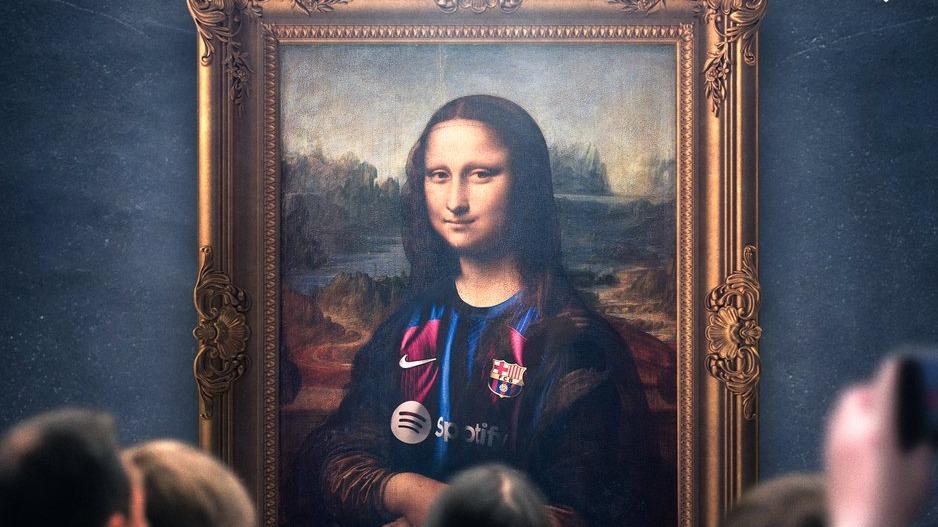This article is taken from the
Figaro Hors-série Vermeer, painting silence
.
In this special issue, discover the Dutch Golden Age, the life and work of the Delft prodigy, on the occasion of the largest retrospective ever organized on Vermeer, at the Rijksmuseum in Amsterdam.
There are works that are neither questions nor answers, but riddles.
We lose ourselves in scholarly conjectures about the identity of the mysterious
Girl with a Pearl Earring
(circa 1664-1667).
Some historians thought they saw the portrait of one of Vermeer's daughters, although we do not know them and we do not know the birth dates of her children.
This face full of freshness, although carefully considered, seems to spring from a long patience of shadow to expose itself to absolute visibility.
Reserved, silent, the young unknown is very far from the faces that we are accustomed to contemplating the contemporaries of Vermeer, Frans Hals, Rembrandt, Peter Paul Rubens or Diego Velázquez.
As if she were from another time.
With Rembrandt, we cross, in the lines of a face, the unlimited depths where the painter leads our eyes.
They are the endless echoes of a life, of the hopes, of the torments, of the resignations of which an existence is made.
Because painting is not content with relationships of values, lines and colors.
With Rembrandt, the invisible reaches the visible.
With Vermeer, the visible awakens the invisible.
What if Vermeer dreamed of himself in the other?
Read alsoMichel de Jaeghere: “Vermeer, deceptive sun”
The girl with a pearl earring
, in the solitude of this small painting, crosses the opaque and reveals herself in an instant as an illuminated being.
Made of nothing or rather of everything, the sublime unknown here plays with matter and gravity, with a minimum of physical life.
The girl with the pearl
, with the immense forehead, so limpid and so clear, does not regret having remained in the dream state.
The part of the infinite, which gorges itself on a spell blue in the headband that hides its hair, still surpasses that of the finite, and takes us very far into the immobility of the moment.
All distances, all intimacies are possible.
And that's when this face emerges, three-quarters, from the shadow it still clings to.
No line defines the profile of the nose in this perfect oval: only the color and tone of the cheek suffice.
Vermeer skims over the details.
Except on the brilliance of the pearl which, with a touch, sparkles, dazzlingly.
This young woman, with enigmatic melancholy, of whom we know nothing, neither the name nor who she is, no longer looks at the painter.
Her mouth half open, she allows herself to be seen and it's us, forever, that she gently stares at, in intense uncertainty.
This woman-child looks at us, but lets nothing be revealed.
Vermeer makes us see here what is not to be seen.
The unknowable always refuses to be reduced to the known.
This absolute masterpiece could not escape the scrupulous observation of specialists.
And they made an astonishing discovery: the background of this painting was not originally intended by Vermeer as we see it today.
Their analyzes reveal that the artist actually painted a translucent enamel green glaze.
Another small canvas by Vermeer arouses controversy and enthusiasm:
The Lacemaker
.
The controversy focuses on the time of its realization.
Some experts place it at the turn of the 1660s. The technique of luminous dots, masterfully used in this composition, would link it to the same period as
The Milkmaid
and The
View of Delft
.
Other historians, on the contrary,
Renoir said it was the most beautiful painting in the world.
As for Salvador Dalí, he was haunted all his life by
La Dentellière
, "
by its subversive and impulsive charge
" provoked by the milky and bloody flow of the threads which slip from the cushion, spread out on the tapestry, and produce a disturbing impression lifted by the red thread which comes to lick a bible placed on the table.
The young woman stands out against a bare wall and concentrates on her work.
Silence.
A minute of life passes, pampered by the clarity of the colors.
This clarity after the rain.
Vermeer's common thread!
Life, our life, often hangs by a thread.
Vermeer, painting silence
164 pages, €13.90, available on newsstands and on
Le Figaro Store
.
The Girl Reading a Letter in Front of an Open Window
, by Vermeer, c.1657-1658 Dresden, Gemäldegalerie Alte Meister
SEE ALSO
- Vermeer exhibition: the retrospective of the century









